The most important piece of equipment for scanning film is the macro lens. Light pads, negative holders, and the camera itself are all less important in creating a good quality scan overall.
One of the cheaper options for a good macro lens that many film photographers consider is the Sigma Art 70mm macro lens. This lens was released in 2018, and contains a state of the art focus by wire system that gives users full control over the macro, by giving them control over the smallest increments of focus possible.
But how good is this lens for scanning film?
4.5 out of 5 stars: the Sigma Art 70mm macro lens is the most recommended lens for scanning film. The lens features state of the art coatings that significantly reduce flaring, allowing it to create sharper scans than any older lens design, without any loss in corner sharpness.
In real world tests, the Sigma Art 70mm macro lens performs better than lenses that cost twice as much, and even performs almost as good as lenses that cost 10x as much! This lens is the best bargain in macro photography, and for scanning film. Get your copy on Amazon here, or Adorama here.
I’ve used this lens for the last two years, scanning hundreds of rolls of film, including 120 and 35mm scans. Switching to this lens from using an Epson V600, and even standard lenses with extension tubes has resulted in significantly better scans.
Here are my thoughts on using the a Sigma Art 70mm macro lens for scanning film.
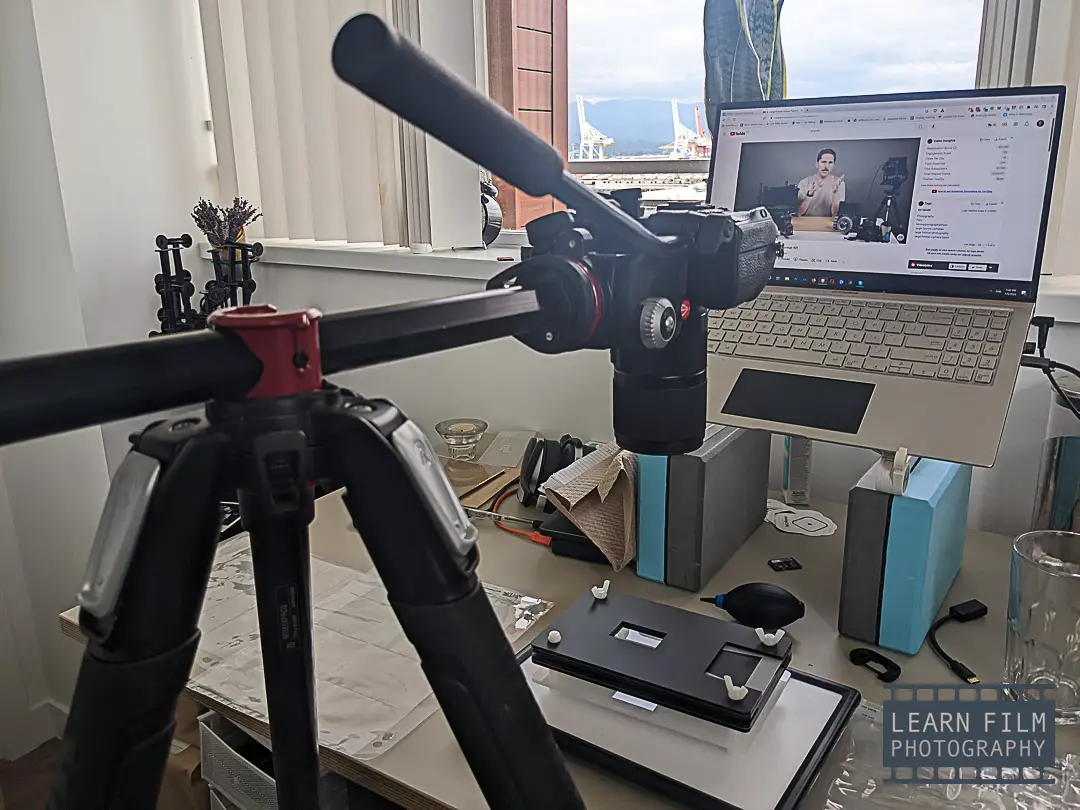
Sigma art 70mm macro sharpness
The Sigma Art 70mm macro is one of the sharpest macro lenses on the market. The Sigma art series lenses are renowned for being among the sharpest lenses ever created, and this macro lens is no exception to that rule.
The lens results in astounding images that resolve every grain on the film. This is one of the nicest lenses out there in terms of micro-contrast, which means it clearly shows transitions between colors and in-focus and out of focus areas on the film, which is something the Epson V600/V550 struggles with even when scanning larger negatives.
The flare resistance is also second to none with this lens. When scanning film in subdued light without perfectly masking off the edges of the frame, the Sigma Art 70mm macro lens rarely flares. Especially when stopped down to f/7.1, which is my preferred aperture for scanning film.
When it comes to creating the sharpest results, this lens will not let you down. You can easily spend more than double the cost of the Sigma Art 70mm on a good, top-of-the-line, macro lens, but you will not get nearly twice as good results.
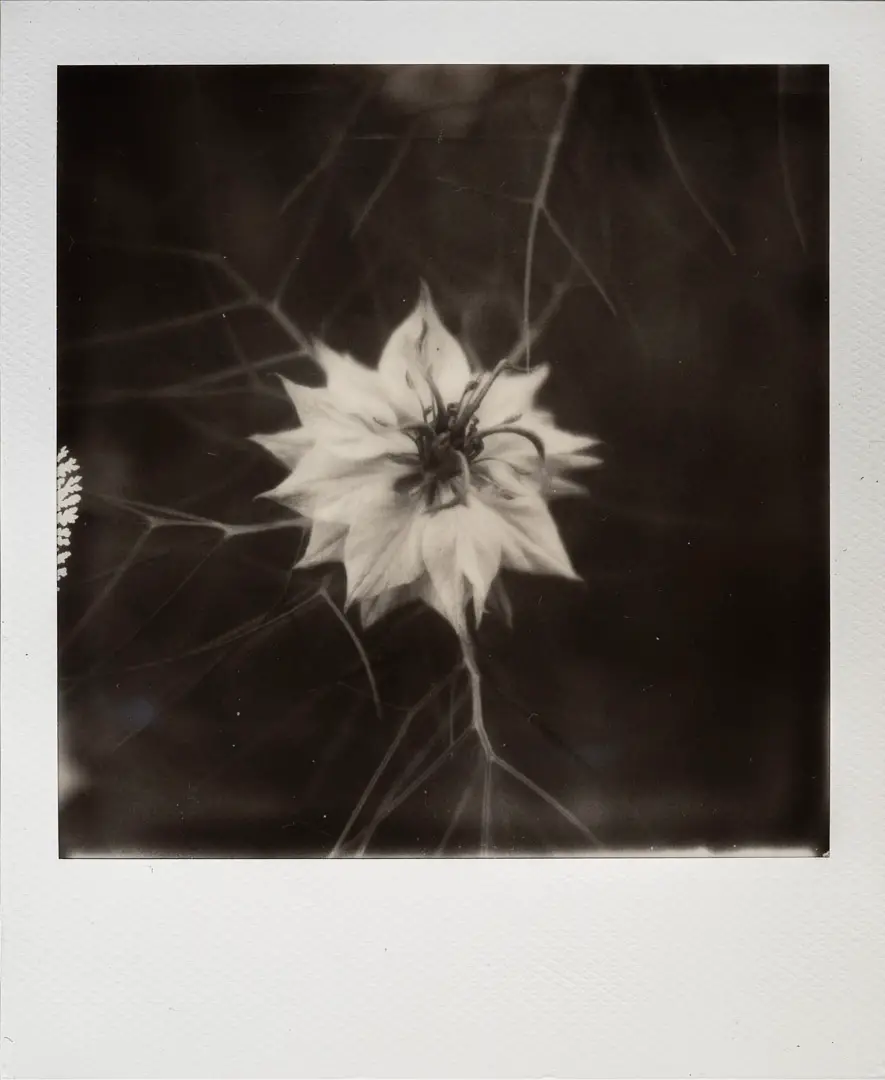
Using the focus by wire system
Depending who you ask, a focus by wire system can be incredibly beneficial, or the worst thing to ever happen to lens design.
These systems mean that when you move the focusing ring on the lens, you’re not moving the focus in an analog motion. Instead, electronics inside the lens decide how far to move the focusing, often in steps rather than fluid motions.
But the Sigma Art 70mm Macro lens gets the focus by wire system right in many ways. The biggest benefit to using these in a macro lens is that you can fine tune the focusing in a way that just isn’t possible without it. When you move the focusing ring slowly, the focus moves slower to allow you to perfectly dial in focus on the negatives or your macro subject.
This is important, because when you’re working so close to something like a film negative, the focus plane can be so small that even tiny movements can throw an object out of focus.
With that in mind, always be sure that your camera is perfectly level with the film. That way, the scans will be sharp from side to side. Even a slight angle can cause a part of the scan to be completely out of focus. This is more important for 35mm, however, as you will be closee to the negative and create a much smaller depth of field.

Is 70mm long enough to scan medium format?
If you’ve ever printed film in an enlarger, you will know that you need a longer focal length for printing medium format negatives than you will for 35mm.
I remember when I first started out with a little Durst enlarger in my bathroom, I used a 50mm lens, and always ended up with white edges around the image because of that problem.
When it comes to scanning film, many people do suggest using a longer focal length lens for medium format scanning purposes. However, that advice is only really applicable to older lens designs, as modern macro lenses are created to first and foremost, create images with a perfectly flat field of focus.
That means the edges of the image will be just as sharp as the center, even with a wider focal length like 70mm. Modern optics and lens designs have come a very long ways in recent decades, and newer macro lenses are far superior to the older options.
In fact, I’ve also been using the Sigma Art 70mm Macro lens to scan Polaroid images, which are even larger than the largest medium format negatives, and have still been able to get the full details around all the edges of the frames. That proves that the lens focal length isn’t a limiting factor in scanning negatives.
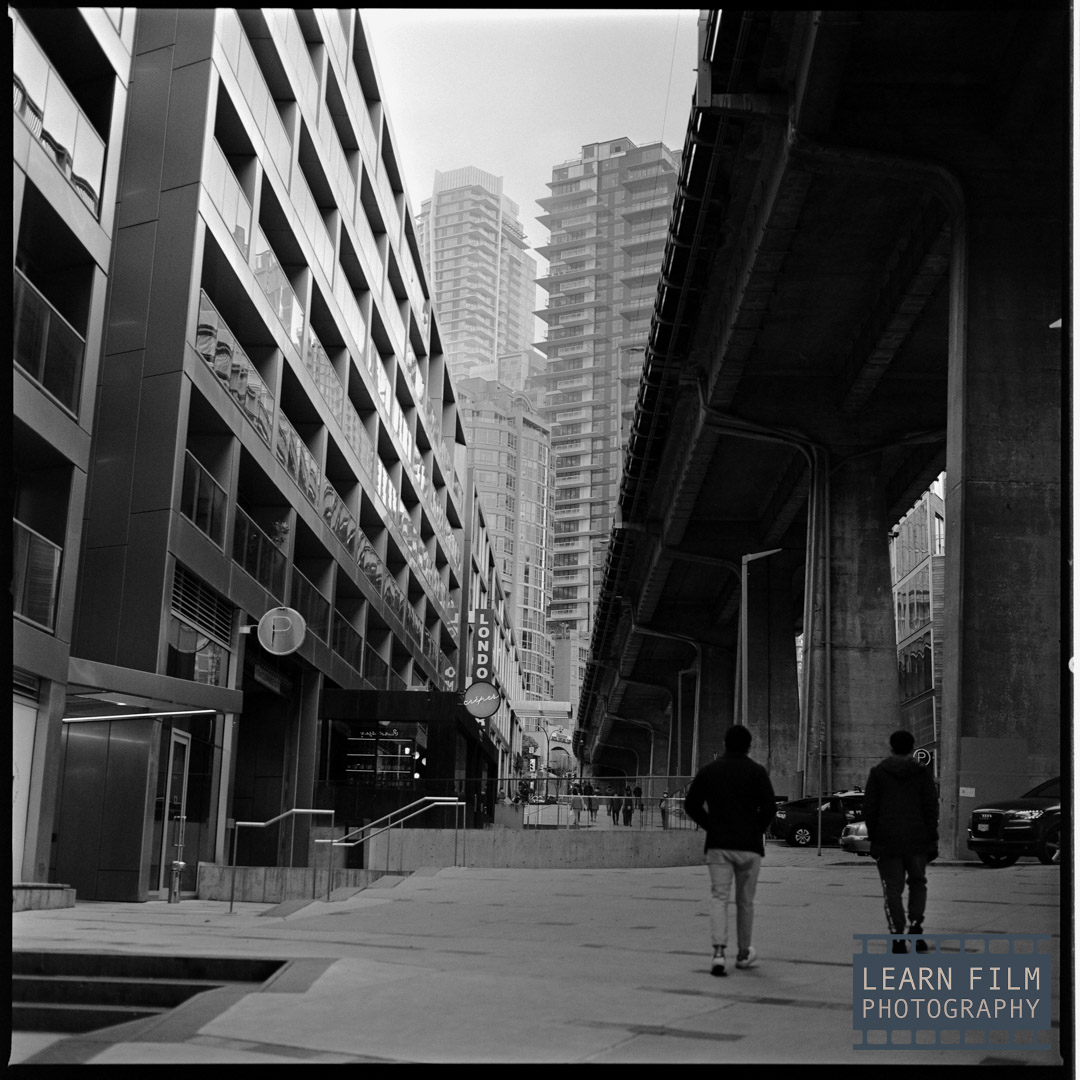
Downsides of the Sigma Art 70mm Macro lens
I use a Canon mount Sigma Art 70mm Macro lens on a Sony camera with a Sigma converter, which means I may not get the full benefits that users would see with a native lens.
But using the setup that I have, I’ve noticed the Sigma lens is not the most reliable lens in terms of auto focus.
Using other Canon-mount Sigma lenses with the converter, focus is nearly perfect, and so quick that it’s rarely ever missed, even in high-stakes, difficult situations like weddings and events. But the Sigma Macro lens tends to struggle when you need to auto focus on a moving subject.
This problem may be fixed with a software update using the Sigma dock. But I’ve found it sometimes jumps far out of focus without notice — especially when there is a moving subject.
This process can be painful, and make it very much a purpose-based lens. In the field, it only comes out for ring shots, a few baby detail photos. But otherwise, I’m sticking to the standard lenses for their reliability (even if this lens is technically sharper).
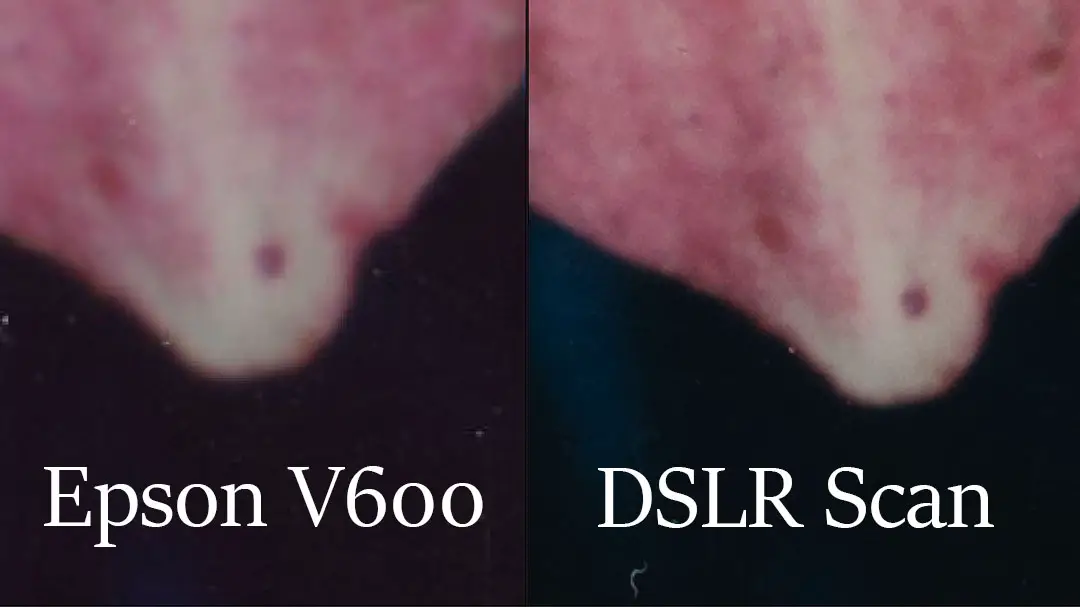
Final thoughts, is the Sigma Art Macro 70mm lens worth it?
The answer to this question is a resounding yes. Since purchasing the lens, I’ve scanned hundreds of rolls of film, and taken it to more than a few weddings. Even though there are some minor problems with it, it still is one of the best purchases I have made in the last couple of years.
The sharpness and flare reduction this lens brings to the table are simply unmatched by alternatives, like flatbed scanners, or even older lens designs like the Canon 100mm macro. In the vast majority of cases, there is no need to upgrade to a more expensive lens than this one, as any benefits will only be minor for the extra money.
That’s why the Sigma Art 70mm macro lens is the film scanning macro lens of choice for LearnFilm.Photography. Get your copy on Amazon here, or save money on a good-quality used copy on eBay here.
Using these links is one of the best ways to passively support the LearnFilm.Photography blog at no extra cost to you. We only link to products that we have personally used, purchased, and tested with our own time and money to ensure we’re creating the best resource possible. Learn more about how we use these links in the LearnFilm.Photography affiliate policy.

By Daren
Daren is a journalist and wedding photographer based in Vancouver, B.C. He’s been taking personal and professional photos on film since 2017 and began developing and printing his own photos after wanting more control than what local labs could offer. Discover his newest publications at Soft Grain Books, or check out the print shop.

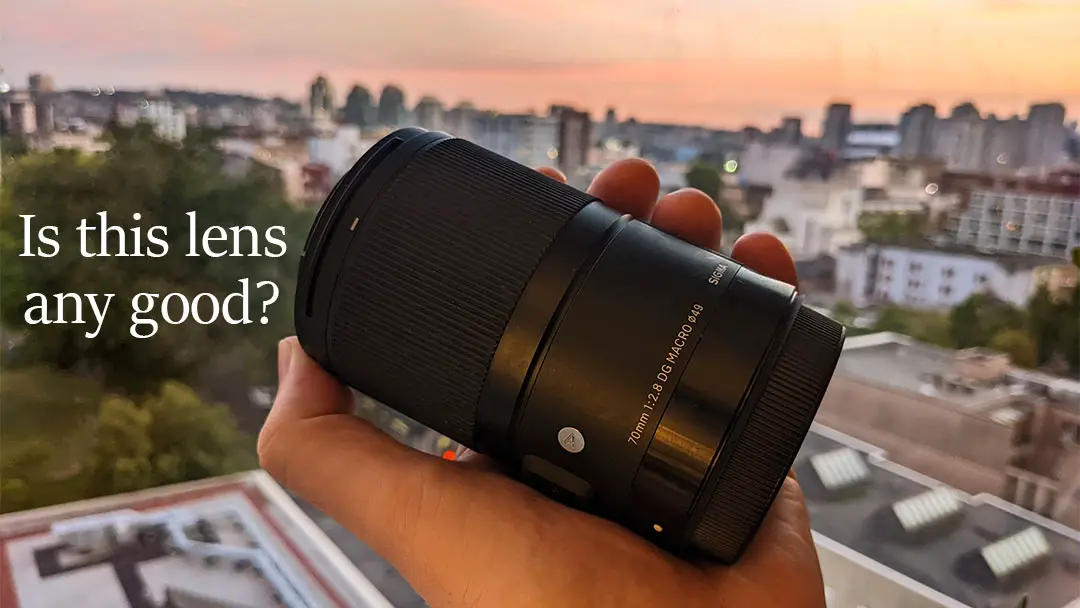
I have a crop sensor Canon 7d. Would this lens work the same? I have an entire small box of 120 slides from my great grandparents to scan, and also a handful of other 35mm slides to re-scan that I had previously sent off to a service (they missed several or overly cropped some). Thanks!
Hi Aisha,
Yep, the Sigma 70mm lens will work very well with the Canon 7D! You’ll have to have a little more working distance with the crop sensor, but that can actually be an advantage because you’ll have a larger depth of field at smaller aperture settings. That’s great that you’re scanning those photos — I’m sure there are tons of fantastic memories in those boxes!
Regards,
Daren